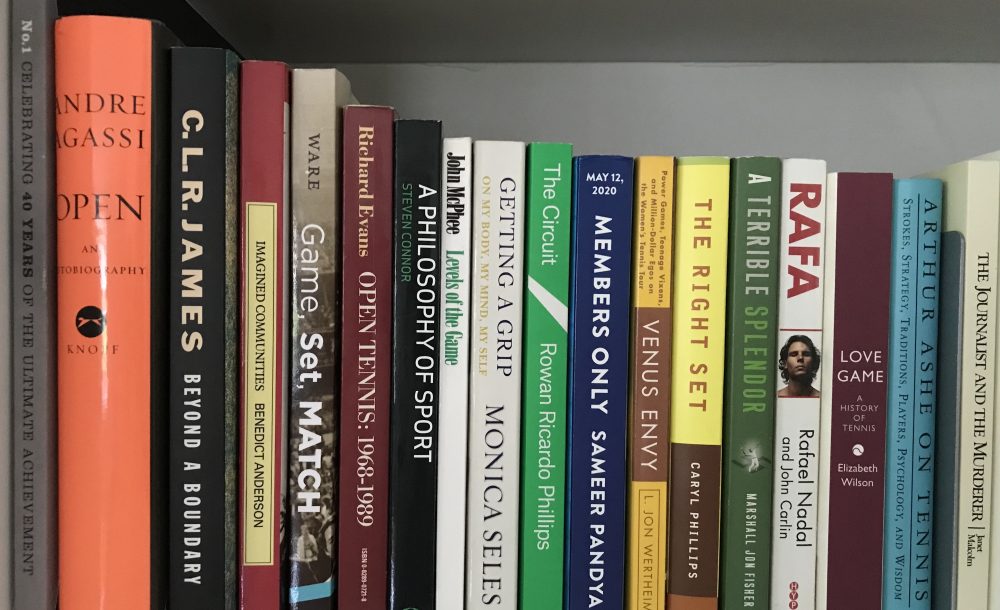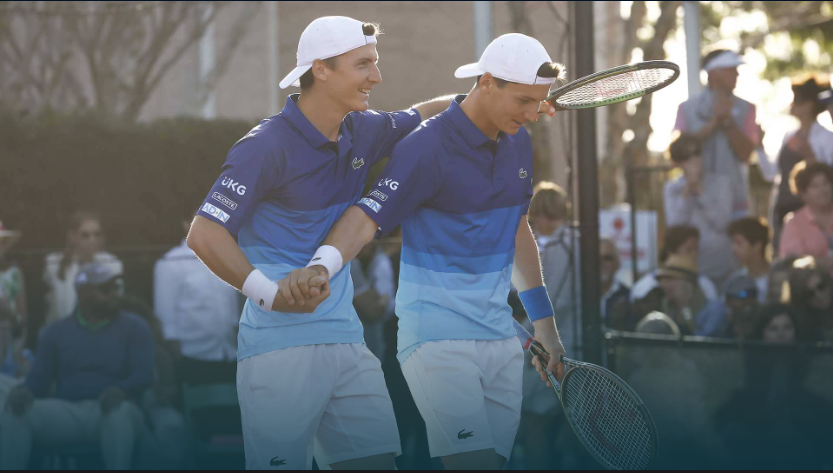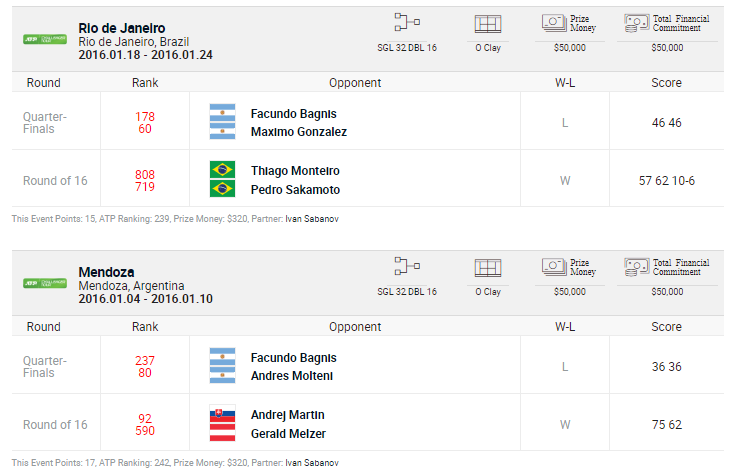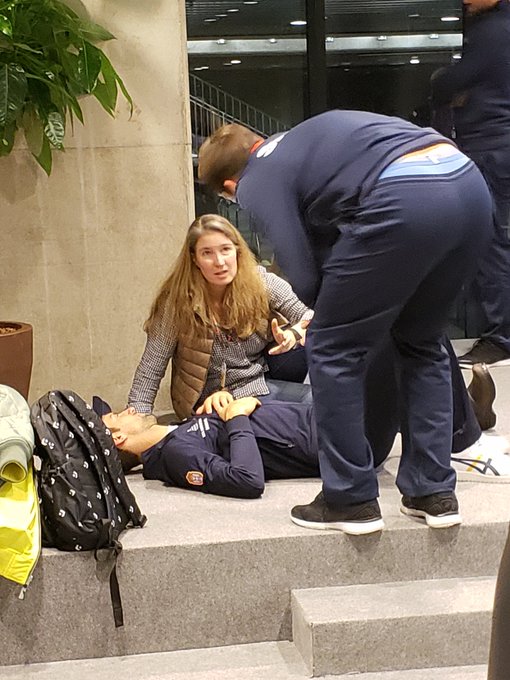This is a piece I published in early September 2012 on the now-defunct Tennis Space website. Though the original article didn’t include hyperlinks to my sources, I’ve added as many of those as I could here so that anyone interested in more information can track it down. (Despite being tempted to make other changes, I’ve left the content as is, with one exception placed in brackets.) A decade on, I’m gratified to note that many of the arguments I made are being voiced by top players; and with the formation of the Professional Tennis Players Association (PTPA), there is now a group working full-time to advance the best interests of all players.
With extensive television coverage and more column inches dedicated to the sport, it’s not surprising that off-court controversies garner greater attention during the Slams than at other points in the tennis season. At the US Open, we’ve again been exposed to some of the more complicated aspects of life on tour, be it Maria Sharapova’s difficulties maintaining a long-distance relationship while traveling, the USTA’s decision to bench #1 junior Taylor Townsend until she improves her “fitness,” or frustration with tournament transportation, scheduling, and rain delays. And, as at Wimbledon two months ago, ongoing fascination with aspects of the women’s game—specifically, with debating a cluster of topics referred to, more for convenience than accuracy, as “equal prize money”—is a recurring theme. Oddly, though, it is male players who are doing most of the talking.
In London, it was Gilles Simon, newly-elected to the ATP Players Council, who kicked off the debate with comments to French press, only a few which were pursued after Simon made his second-round exit. Although he had raised a number of issues for the Council to tackle (including the 2014 tournament calendar), only remarks that seemed to disparage women’s tennis got much play in the English-speaking media: “You are only talking about [prize money], but I talked about many things,” Simon noted. Given the opportunity to clarify his views for a broader audience, the top-20 player made an argument rooted in entertainment value and market economics: since, in his words, “men’s tennis is actually more interesting than women’s tennis,” and the “price of the ticket from the men’s final” is more expensive than that for the women’s final, male players should get more money at the major tournaments.
Throughout the summer, including the past two weeks in New York, Simon’s views have been echoed and elaborated upon by the likes of Nikolay Davydenko, Sergiy Stakhovsky, and Janko Tipsarević. While continuing to discuss the women’s game, these players shifted the focus to what they see as the unequal work performed by male and female players. “Why,” asked Davydenko, upset after failing to capitalize on a two-set lead over Mardy Fish, do the “girls play best of three sets, and we should play best of five sets, and have the same prize money?” Stakhovsky, also a player representative, took the disagreement a step further, not only mentioning “the amount of time [men] spend on court” during matches but also complaining, in an interview with Lindsay Gibbs, that WTA players are ungrateful for the effort the ATP Council has made in securing prize-money increases and that their presence at “combined” events makes it difficult for male players to book practice courts. Tipsarević, tossing off a casual tweet with the hashtag “#equalprizemoney” after a dominant quarterfinal performance by Serena Williams, is merely the highest-profile ATP player to add his voice to the fray.
That there is “much ado” in the tennis world these days, we can all agree. Given the rapidity with which words circulate and get taken out of context in the age of social media, the opportunities for confusion and misunderstanding are ample, in this context as in any other. All concerned parties risk neglecting significant problems when much of the talk (on Twitter, online forums, and even in locker-rooms and press centers) is one-sided, adversarial, or off-topic. So, moving forward, it’s important that fans as well as players, media as well as management, are able to distinguish the real issues facing professional tennis from the distractions. It also can’t hurt to remind athletes—whose jobs require them to focus on winning—that the most effective debates often function like dialogues in which all parties are seeking common ground, rather than contests in which two sides square off and each tries mightily to force the capitulation of the other.
End of Discussion
The bottom line here, as in many instances, is monetary. Although some are insisting that what’s at stake has something to do with equality between the sexes, it’s really a matter of economic conditions on tour that affect male and female players, particularly those ranked outside the top 50 or lacking support from national federations, in identical ways. As Ivan Ljubičić, a former president of the ATP Player Council, observed from Melbourne in January, “the general feeling is that the money we are getting from the Slams…, it’s definitely not what we would like it to be.” In fact, the issue of player compensation is two-fold: it concerns both the what and the how of tour finances.
What is another word for revenue: specifically, the percentage of tournament intake that goes—or should go—toward prize money. (Christopher Clarey rightly noted in yesterday’s New York Times that there is no consensus among tournament officials about whether to “link” prize money to percentages of either tournament revenue or profit.) While the problem of revenue sharing is more urgent at the ITF-governed Slams, which now allocate between 11-17% of the monies they amass for player checks (compared to between 20-30% at tour events), that is also where there’s been progress of late, with prize-money increases at all of the majors in 2012.
How signifies the way prize money is distributed across tennis’s ranks: that is, according to tour wins. The further a player advances in a tournament draw, the bigger the check; the more overall wins, the greater the annual income. This much makes intuitive sense until we contrast the amounts awarded in early and later rounds and consider how top-heavy the men’s tour, in particular, has become over the last decade, with a small handful of players winning almost all of the big prizes. These results—which, in other contexts, are taken as evidence of a “golden age”— have contributed to what USA Today’s Doug Robson has called the “wealth disparity” in tennis: a class divide amongst players that is comparable to economic conditions protested by the Occupy Wall Street movement.
With regard to “income inequality,” Stakhovsky himself has been one of the most articulate members of the ATP, helping to convey what life is like for players outside of the tennis elite. In an April interview with journalist Evgeny Shvetz, the Ukrainian player used his own case as a player ranked near 100 to illustrate that many pros, far from enjoying the life of luxury suggested by Moët, Rolex, or Mercedes advertising, actually have a hard time breaking even after covering the ever-increasing costs of life on tour: equipment, airfare, food and lodging at tournaments, coaching, fitness training, physiotherapy, and so on. Of the players now at the top of the game, “Stako” remarks, “that’s simply another world. What those four earn—isn’t comparable to all the rest. We simply don’t exist in comparison with them. [Endorsement] contracts, clothes—that’s all for the top-5 or top-10 players. . . all the big brands [know] that they only need to pay the top players, all the rest are for free.” What Stakhovsky and others have described in detail are the realities on the ground—not simply for a handful of ATP players but for so many who make the tours possible in the first place. If men’s and women’s tournament draws each featured only 16 players instead of 64—or the 128 of the majors—how long would events last and how interesting would the competition be? Though tennis is an individual sport, the fates of almost all the players (veterans and newcomers, higher and lower ranks, male and female) are tied. Instead of using their public statements to score points or talk past each other, then, ATP and WTA players need to identify and prioritize their ends and work toward achieving them collectively.
Battle of the Sexes
One of the central impediments to progress stems from how the debate is currently being framed. During the last quarter of 2011 and the start of this season, the most central challenges facing professional tennis (concerns both economic and structural) were narrowly defined and thus more effectively discussed. Since then, the tennis world has gotten bogged down in numerous conversations pitting male and female players against one another. No one person is to blame for this, of course, but many have contributed to the conversation’s getting off track, including ATP and WTA stars, as well as fans, who’ve responded to perceived criticism by outspoken players with pointed one-liners and even ad hominem attacks.
The media, for their part, have not always helped. A case in point is the New York Times. Clarey’s piece, for instance, doesn’t quote (or even mention) a single female player or official. [Note: a few days after I read it, the NYT posted “a more complete version of the story than the one that appeared in print”; it now quotes Serena Williams.] Despite discussing issues that affect WTA players as much as they do those in the ATP, the article relegates women to a parenthetical aside and describes them as being “along for the ride” in terms of the fight for increased prize money. In doing so, it replicates precisely the sort of behavior that frustrates WTA Player Council members like Bethanie Mattek-Sands, who told Matt Cronin of Tennis.com that the ATP player representatives “really don’t talk to us a lot. We agree with some of the things of they want. . . but they haven’t approached us.” She added, “We’d love to sit down and talk to them. [But] it’s tough when it’s in the media and they aren’t even giving us a chance to say whether we agree.” Last week, the Gray Lady also asked several sports writers to respond to the question “Women’s Tennis: Is Best of Three Sets Enough?” While the implicit topic of this discussion is financial (and featured debater Megan Fernandez says so plainly in her segment, “This Is About Prize Money”), the NYT’s emphasis on gender suggests there is something inadequate about the women’s game as is and creates unnecessary tension between players on the two tours—and their fans, too. Somewhat ironically, blogger Cheri Britton and Tipsarević land on the same side of the “equal play” divide, with the former claiming that “women deserve epic matches” men sometimes experience at Slams (David Ferrer’s quarterfinal triumph over the Serb at the US Open comes immediately to mind) and the latter asserting that it’s wrong-headed to suggest women are “physically unable to play best-of-five sets.” But because no female player has expressed feeling deprived of meaningful victories (just ask Serena Williams how she felt after her come-from-behind win over Vika Azarenka in Sunday’s final!) and few in this day and age believe women aren’t fit or strong enough to go the distance, these arguments fall flat.
Particularly in an Olympic year, where there was a different format on the men’s side, it makes sense to ask “should men play best-of-three sets at major tournaments?” (as Ben Rothenberg did in the NYT‘s US Open preview). After all, it didn’t take Novak Djoković and Rafa Nadal playing nearly six hours in the Australian Open final for fans, tournament organizers, broadcasters, and players themselves to start wondering if less might be more when it comes to match length. But given that “should women get equal prize money” is a question that’s been answered—in the case of the US Open, for some forty years!—and that “should women play five sets like the men?” is not a question being seriously entertained by fans, WTA players, or the ITF, why are they being asked? And why now? Until I’m persuaded otherwise, my answer is that either we’ve got a serious misunderstanding on our hands or this way of presenting the problem benefits some constituencies—or both. Below, I’ve identified a few misconceptions that may be contributing to the confusion about what ails tennis. It’s also possible that the “battle of the sexes” frame works for attention- or conflict-seekers (there’s a reason “to troll” has become a popular verb), those looking to generate page views on media sites, &/or those who have something to lose if the real challenges are addressed. In this “battle,” that is, perhaps it’s not so much that sex sells but that controversy does.
Work It Out
A phrase much used in these debates—“equal pay for equal play”—has a nice ring to it but is, in fact, part of the problem. A conceptual obstacle in these discussions is that male players, in particular, tend to talk about “play” as if match-time represented the only effort they or members of the WTA put into their careers. While it’s of course true that they earn their living via prize money derived from fans who buy tickets to see them perform, most players would be taken aback, if not deeply offended, if anyone suggested the only real work they do is on show-courts at tournaments. As all will testify if asked, they clock hours and hours away from spectators’ eyes. Their days are packed with aerobic work-outs, weight-lifting, on-court practice sessions, stretching and yoga, physiotherapy, and meals prepared less for culinary delight than to maximize performance. In addition to all this physical activity is time in front of journalists and cameras being interviewed, photographed, and filmed for media and marketing purposes. This is all work, is it not? Are ATP players really prepared to not simply assert but actually prove that female players do less work, day in and day out, over the calendar year than they do, just because they happen to spend fewer hours engaged in tournament play at a handful of events?
While the emphasis on play is limiting, it is also understandable. Because tennis players (especially those who aren’t high-profile enough to have a portfolio of endorsements) earn their way by winning, it makes sense they would think of match-play as paramount. Without the wins, there’s no money. But at the same time, without all the other work they do, there are few, if any, wins. For a variety of reasons, tennis professionals may be reluctant to think of themselves as engaged in labor—newly retired Andy Roddick, for one, prefers to call his peers “the talent.” Still, it may be time for them to start thinking of themselves as workers, rather than mere players, because only with a more nuanced and complete sense of their labor (and the conditions in which it takes place) will they be able to effectively negotiate to make sure they’re adequately compensated for it.
Divide and Be Conquered
The ATP and the WTA are separate entities with their own members, events, sponsors, budgets, staff, and leadership. And yet, the two enterprises overlap and cooperate in significant ways and have far more in common than not. Just as there is strength in numbers within the tours, there is also advantage to be gained from forming alliances between them. As Roddick recently acknowledged, getting players to come together is quite difficult: “you’re dealing with a bunch of different languages, different agendas, guys who play singles, guys who play doubles, guys who play clay, guys who play hard.” But, he added, his sights are fixed on a bigger target—on “what’s best for the game.”
In the end, how different are what’s best for the ATP and what’s best for the WTA? The current squabble over prize money suggests that the two constituencies are in competition for limited resources, like hungry children fighting over a single, already-cut piece of pie. Again, Roddick: the “powers that be,” he stated somewhat wearily after his first-round win last week, “are betting against us being able to unify, and they have been getting away with that gamble for 25 years and we haven’t proved them wrong yet.” Even though it would be difficult at first, it would also be more strategic, productive, and beneficial in the long run if ATP and WTA members started thinking of one another as collaborators working toward a shared goal. Ultimately, the fundamental change both groups are seeking is getting a larger slice of the revenue pie for players. Members of the ATP must give up on the idea that the Slams and elite combined events would undo deals that took decades to make by raising only men’s prize money. They have to recognize that the stakes in this specific argument are “all or nothing” and that the tournaments are more likely to give all players nothing than to give one group of players “something.” In sum, the effort expended in fighting with each other—largely through intermediaries in the press—is energy that could be better spent.
Pay Day
Increasing the players’ share of tournament revenue, at the Slams in particular, is important. But perhaps even more important is the matter of economic equity within the tours. To achieve greater parity, to ensure that being a professional tennis player is a viable career path for more than the top 50 on each side of the tour, there needs to be a reconsideration of the entire pay structure of the ATP and WTA. In other words, the main questions players should be debating are: “Is the pay structure in tennis working as is? Beyond how efficiently the system functions, is it fair? If not, how could it be improved? What outcomes would we like to bring about through our joint efforts?”
Answering these questions is a daunting task, one that requires strong leadership and organization among top and rank-and-file players, as well as creative and critical thinking about how—and on whose behalf—the tours operate. At present, players are individual contractors who are paid by way of tournament prize-money. This system is flawed, however, both because the players do far more than play and because the tours, to even exist, are dependent on the labor of workers, a majority of whom do more losing than winning throughout the year (for example, Stakhovsky, one of the hundred-best male tennis players in the world, came into the US Open with a record of 12-22). Sports like basketball set minimum annual salaries, based on years of service, thereby recognizing that every player makes a contribution to the team’s success, even if he or she is not the top scorer in a given game or the MVP of the league. In other professional spheres, there is often a distinction made between base salary, which hopefully sees annual cost-of-living increases, and merit- or bonus-pay, which is tied to specific measures of productivity or quality of performance. And in the realm of unskilled labor, there are debates about whether “minimum wage” should be substituted with a “living wage” ensuring that those working full-time jobs are able to support their families at a subsistence level. Rather than being a world apart, tennis might look to and learn from the best practices in other professions.
It isn’t beyond the imagination or ability of those in professional tennis to devise a pay structure that both incentivizes winning and provides a reasonably steady income for the dedicated workers who make it possible for the game we enjoy so much to exist beyond the exhibition format. But there has to be someone—in all likelihood, multiple people—working toward such significant change on a full-time basis. It’s not enough for individual players to speak out occasionally or for their councils to hold meetings a few times a year. These problems, which have been present for decades, will require focus and dedication to solve. Surely, tennis can find a few good men and women for the job.
















